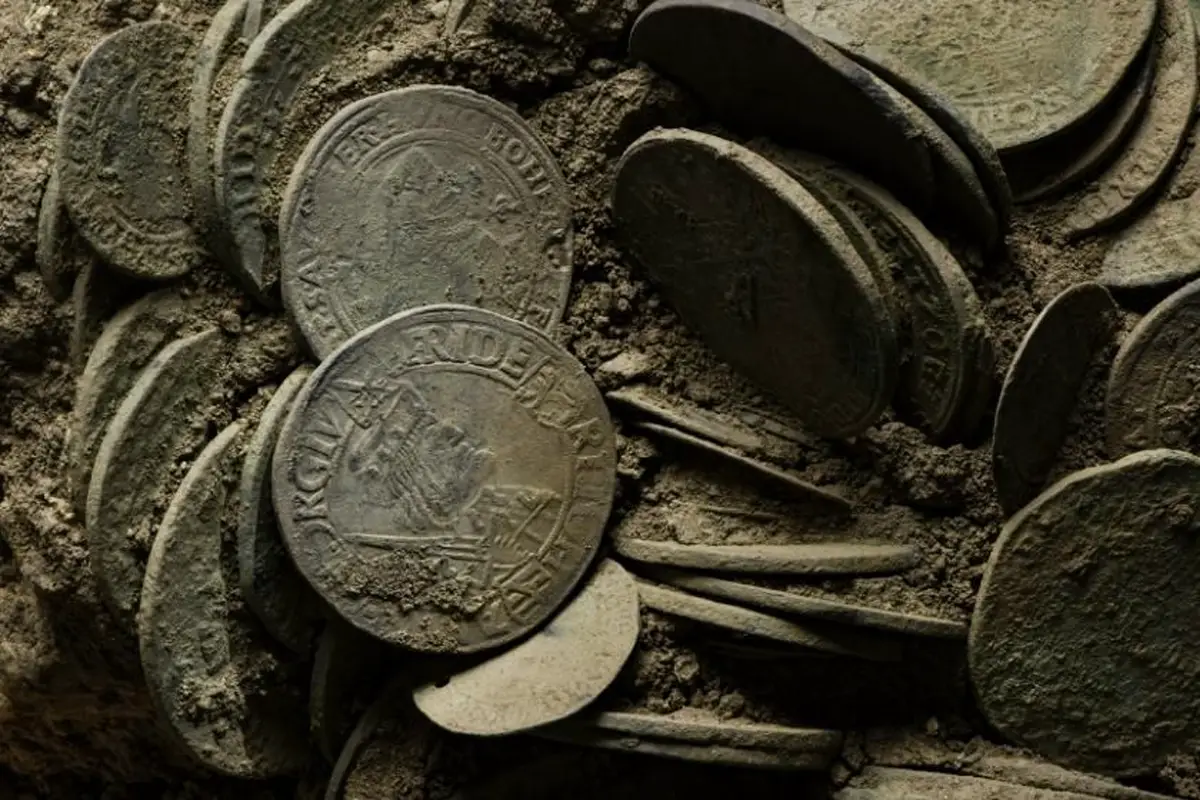Archaeologists from the State Office for Monument Preservation and Archaeology Saxony-Anhalt (LDA) have discovered a large 17th century coin hoard during construction works at a farmstead in the town of Wettin, Germany.
Situated in the heart of Wettin, the farmstead has been maintained by the Altstadt Wettin e. V. since 2018. The organisation is dedicated to preserving the town’s cultural heritage, which is at risk of being demolished due to modern development.
The bourgeois farmstead dates from the 16th to 17th century and can be traced to the time of the end of the Thirty Years’ War via written sources. From 1681, the building served as the town’s pharmacy, as indicated by remnants of an 18th-century baroque stucco ceiling and an Apotheke vault.
Construction work at the farmstead has uncovered a hoard of 17th-century coins in the gate area leading to the central courtyard. Archaeologists found 285 silver coins in layers of compacted soil, which were sent to the restoration workshop of the LDA Saxony-Anhalt.
The hoard was likely deposited in the late 1650’s, with more than half of the coins being silver thalers, a currency used by several states of Northern Germany, first under the Holy Roman Empire, then by the German Confederation. The rest of the hoard consists of thaler fragments and various groschen coins.
Among the hoard are the so-called Schreckenberg grochen coins and Albertus thalers minted in the Spanish Netherlands. There are also coins minted by the German emperors, the Duchy of Brunswick-Lüneburg, the Archduke Albert VII of Austria, and King Philip IV of Spain.
According to the LDA: “In addition to its scientific significance, the Wettin coin find is also an excellent example of the important contributions that voluntary work in close cooperation with the responsible authorities for the preservation of buildings and archaeological monuments can make to our knowledge of the history of Saxony-Anhalt.”
Header Image Credit : Juraj Liptak
Sources : State Office for Monument Preservation and Archaeology Saxony-Anhalt






